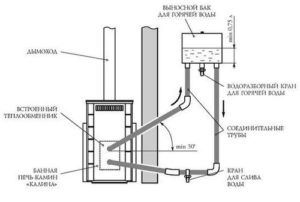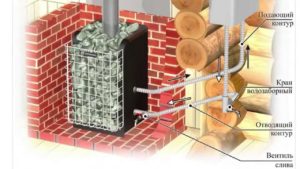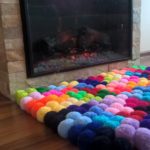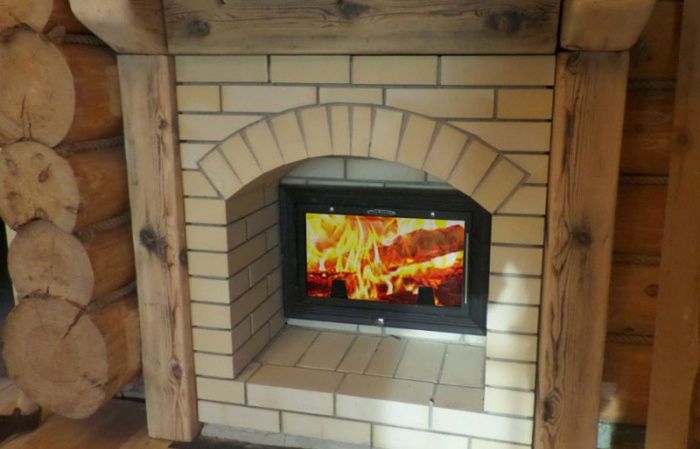DIY heat exchanger for a sauna stove
 The heat exchanger is an additional heating element that appeared not so long ago. With its help, you can use the excess heat generated by the stove to heat water or heat another room in the bathhouse. Undoubtedly, steaming and washing in different rooms is more comfortable than in the same one. Is it possible to make such a device with your own hands and what is required for this?
The heat exchanger is an additional heating element that appeared not so long ago. With its help, you can use the excess heat generated by the stove to heat water or heat another room in the bathhouse. Undoubtedly, steaming and washing in different rooms is more comfortable than in the same one. Is it possible to make such a device with your own hands and what is required for this?
The content of the article
What types of heat exchangers are there for a bath?
 First, let's look at the types of heat exchangers. They are usually divided according to the location of the water tank and the location of the unit itself.
First, let's look at the types of heat exchangers. They are usually divided according to the location of the water tank and the location of the unit itself.
Heat exchangers differ according to the location of the water tank:
- There are those in which this container is located in the steam room itself - this way the water heats up faster and heat loss is reduced. This is the best option if there is no water supply or its length is too short.
- The container can also be located in an adjacent room, which is called a shower room. This option is becoming increasingly popular nowadays, because washing separately from the steam room is more comfortable. In this case, a heat exchanger is used to heat water. But keep in mind that in this case the length of the water pipe increases significantly.
- The coolant tank can also be installed in the attic. This is necessary if you want to increase the pressure power.But there are a number of disadvantages here: the water supply is extended even more than when installing a tank in the shower, and you will also have to insulate the tank to minimize heat loss. You will need to run cold water to the top.
The devices also differ in the location of the heat exchanger itself:
- attachments are located on the chimney;
- built-in - in the oven itself.
By design, there are two types of heat exchangers:
- coil - the simplest option, in which both ends are removed from the tank, where cold water is collected and hot water is taken;
- the connection of two metal containers - a cylinder and a parallelepiped - this model is the most common - not only the water itself is heated, but also the entire room, which allows you to save money or supplement the power of the sauna stove.
DIY heat exchanger
 The easiest way would be to build a heat exchanger, which is located near the chimney. To do this you will need a metal tube with a diameter of 10 mm. This is the optimal size, because if the diameter were smaller, the water would heat up faster, but at the same time it would flow slowly through the tube, and this contributes to the formation of real boiling water.
The easiest way would be to build a heat exchanger, which is located near the chimney. To do this you will need a metal tube with a diameter of 10 mm. This is the optimal size, because if the diameter were smaller, the water would heat up faster, but at the same time it would flow slowly through the tube, and this contributes to the formation of real boiling water.
Adapters are put on the ends of the pipe, which are subsequently flared. To do this, you will need special devices that must be purchased in advance.
IMPORTANT! If you want to make a more complex model, you will need two tubes and sheet steel. From the latter you will need to cut a circle to the size of the first pipe, in the middle of which there are holes with the diameter of a smaller pipe. The tubes themselves are inserted into these holes and carefully welded. This stage is the most important, so mistakes should not be made.It will be very difficult to correct them.
Metal pipes will be needed at the top and bottom. They should be welded with special care. After finishing work, check the heat exchanger for leaks.
As mentioned above, heat exchangers can be installed directly into the furnace. There are many design options for such models. The easiest to manufacture will be flat models. They are less effective, but durable and do not require special skills.
Installation and connection
 The first step is to determine where to attach the hanging container. It is always hung on the wall. For installation, you will need four pipes: the first will be used for direct supply, the second for filling with cold water. A check valve is installed on the third pipe, and a tap and shower are connected to the fourth.
The first step is to determine where to attach the hanging container. It is always hung on the wall. For installation, you will need four pipes: the first will be used for direct supply, the second for filling with cold water. A check valve is installed on the third pipe, and a tap and shower are connected to the fourth.
After this, a valve is installed on the return line to drain the liquid. Using fittings, direct and return turbo lines are connected.
Thus, it is quite possible to make and install a heat exchanger yourself. You just have to adhere to certain rules. Particular attention should be paid to fire safety rules, if violated, a disaster may occur. Also, always check the tightness of any seams. Please note that the liquid should not boil inside the structure, because scale leads to rapid breakdown of the device.
The good thing about a heat exchanger is that it can be used to easily heat the required amount of water and also significantly save on energy costs.






There is no need to do this, 1 - it is NOT SAFE, 2 - VERY EXPENSIVE, how much does the cheapest electric storage boiler cost!?